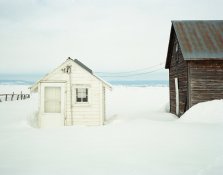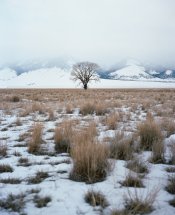montucky
Member
- Joined
- Nov 18, 2012
- Messages
- 2
- Format
- Medium Format
Hey there,
My name is graeme and I am an engineering student from montana with a passion for photo.
Like the title says, I am about to make the leap into 4x5 after years of 35mm and 120. I think there are enough "find me the cheapest field camera" threads out there, so I will look through that question on my own. I dont know much about these cameras, but do realize that the lens is really the crucial part.
I have about 2k saved up for the gear I need (with a fair bundle saved for film apart from that). I have no interest in shooting speed graphic or the like. I'd rather buy nice than buy twice. Willing to sacrifice a bit on the body for good glass.
I would like to get a two lens kit, a 135mm and a ~240-300mm. I will primarily be shooting environmental and tight portraiture, with some scenery mixed in. I rarely ever shoot above f5.6 currently with my 6x7 kit, so shallow DOF ability is something important to me.
I will definitely be shooting color in addition to B+W with the 4x5. I currently shoot a pentax 6x7, which is nice, but I dont like the lens' color rendition as much as my old mamiya 7. I really like the smooth, clean color and sharpness of the mamiya glass. I feel like the pentax has similar colors to the hasselblad's zeiss lenses, which I actually dont like very much.
Here are a couple examples of image output I liked with the mamiya...


So looking for two lens models that are able to give off the same aesthetic, if such a thing is knowable. Preferably in a 135 and a 240-300 range.
Thanks in advance!
-graeme
My name is graeme and I am an engineering student from montana with a passion for photo.
Like the title says, I am about to make the leap into 4x5 after years of 35mm and 120. I think there are enough "find me the cheapest field camera" threads out there, so I will look through that question on my own. I dont know much about these cameras, but do realize that the lens is really the crucial part.
I have about 2k saved up for the gear I need (with a fair bundle saved for film apart from that). I have no interest in shooting speed graphic or the like. I'd rather buy nice than buy twice. Willing to sacrifice a bit on the body for good glass.
I would like to get a two lens kit, a 135mm and a ~240-300mm. I will primarily be shooting environmental and tight portraiture, with some scenery mixed in. I rarely ever shoot above f5.6 currently with my 6x7 kit, so shallow DOF ability is something important to me.
I will definitely be shooting color in addition to B+W with the 4x5. I currently shoot a pentax 6x7, which is nice, but I dont like the lens' color rendition as much as my old mamiya 7. I really like the smooth, clean color and sharpness of the mamiya glass. I feel like the pentax has similar colors to the hasselblad's zeiss lenses, which I actually dont like very much.
Here are a couple examples of image output I liked with the mamiya...


So looking for two lens models that are able to give off the same aesthetic, if such a thing is knowable. Preferably in a 135 and a 240-300 range.
Thanks in advance!
-graeme












